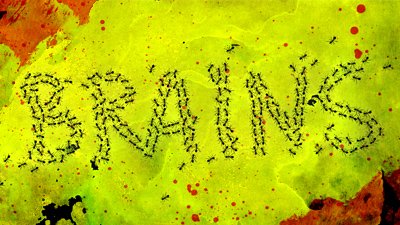
Do Bees and Humans Share a Bold Explorer Gene?
Do bees and humans share a bold explorer gene?
News Source
- Science: “To Boldly Go Where No Bee Has Gone”
Bee scouts—their mission: to explore strange new fields, to seek out new flowers and new sources of food, to boldly go where no bee from their hive has gone before.1 But what motivates a bee scout? What makes her take risks, explore the unfamiliar, unselfishly bring back news of her discoveries and set out again to spend herself for the sake of the hive?
“Most foragers wait to be told what to do, but not scouts,” says entomologist Gene Robinson, whose team’s results were published March 9 in Science. “Scouts go out and search for food on their own. . . . Our results raise the interesting possibility that there’s a genetic toolkit for this kind of behavior.” Genetic activity associated with “novelty-seeking behavior”2 has been identified in vertebrates, Robinson’s team notes. They’d like to know if the same genes play an analogous role in bees.
Graduate student Zhengzheng Liang put a paint dot on bees visiting unfamiliar sugar water stations. “Food scouts, who make up 5 to 25% of a colony’s foraging force, search independently for new food sources,” the team found, “and continue to do so even when plentiful sources have been found.”3 A smaller percentage of a swarm is devoted to nest site reconnaissance. Some bees do both, with nest scouts being 3.4 times more likely to join the food scout force than less adventuresome bees.4
To discover the biochemical underpinnings of such bold bee behavior, the explorers were dispatched and their little brains analyzed.
To discover the biochemical underpinnings of such bold bee behavior, the explorers were dispatched and their little brains analyzed. Risk-takers demonstrated increased transcription from genes coding for the production of several kinds of neurotransmitter receptors. (Nerve cells pass on messages using various chemicals called neurotransmitters. Nerve cells that actively receive lots of messages may have lots of corresponding neurotransmitter receptors present on their cell membranes.) Increased activity of the same neurotransmitters has also been seen in some vertebrate animals and humans that are prone to try new and risky things. “These signaling systems also are implicated in personality differences between humans that are related to novelty seeking.”5 Follow-up tests in which the sugar water was laced with substances to enhance or inhibit these neurotransmitters also correlated with scouting behavior.
Robinson’s group concludes, “Our results demonstrate intriguing parallels between honey bees and human novelty-seeking behavior. Although the molecular mechanisms that produce this behavioral variation are similar, it is unknown whether both species inherited them from a common ancestor or evolved them independently.”6
These results are what we would expect in a world whose biochemistry and inhabitants were designed by a common Designer. Of course, there is no way to know yet whether the increase in neurotransmitter activity is a genetic cause of behavior in scouting bees—or risk-taking people for that matter—or whether the increased activity results from the behavior.
A biblical understanding interprets this discovery as evidence that God used the same sorts of molecules in many different kinds of creatures. Genes for similar molecules are often similar, regardless of the organism, because the genetic “alphabet” is consistent throughout the living world God created. Furthermore, God made all kinds of creatures about 6,000 years ago fully equipped with the behaviors needed to thrive. That certain behaviors are associated with particular biochemical manifestations does not suggest those behaviors evolved over millions of years.
For More Information: Get Answers
Remember, if you see a news story that might merit some attention, let us know about it! (Note: if the story originates from the Associated Press, FOX News, MSNBC, the New York Times, or another major national media outlet, we will most likely have already heard about it.) And thanks to all of our readers who have submitted great news tips to us. If you didn’t catch all the latest News to Know, why not take a look to see what you’ve missed?
(Please note that links will take you directly to the source. Answers in Genesis is not responsible for content on the websites to which we refer. For more information, please see our Privacy Policy.)
Footnotes
- Adapted from the opening theme of Star Trek “Original Series” by Paramount Pictures—obviously.
- Zhengzheng S. Liang et al, “Molecular Determinants of Scouting Behavior in Honey Bees,” Science 335, no. 6073 (March 9, 2012): 1225–1228, doi:10.1126/science.1213962.
- Ibid.
- Ibid.
- Ibid.
- Ibid.
Recommended Resources

Answers in Genesis is an apologetics ministry, dedicated to helping Christians defend their faith and proclaim the good news of Jesus Christ.
- Customer Service 800.778.3390
- © 2024 Answers in Genesis





